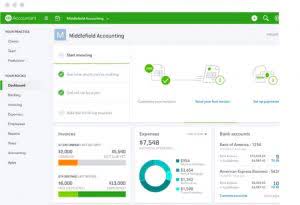
These adjustments give all parties involved a clear picture of their profits or loses from such investments. The 2024 exposure draft does not specifically address the accounting treatment of transaction costs incurred during the acquisition of an investment. However, the IFRS Interpretations Committee has previously analysed this issue, noting that IFRS generally require assets not carried fixed assets at fair value through profit or loss to be measured at cost at initial recognition. This cost includes expenditures directly attributable to the acquisition of the asset, such as legal fees, transfer taxes, and other transaction costs. As a result, such directly attributable costs are typically included in the cost of an asset in the investor’s financial statements.
- The share of an investee’s profit or loss and OCI is determined based on its consolidated financial statements.
- That’s a separate and more complicated topic, so we’re going to focus on just the equity method here.
- With equity method investments and joint ventures, investors often have questions as to when they should use the equity method of accounting.
- If the investee is not timely in forwarding its financial results to the investor, then the investor can calculate its share of the investee’s income from the most recent financial information it obtains.
- Deloitte refers to one or more of Deloitte Touche Tohmatsu Limited, a UK private company limited by guarantee (“DTTL”), its network of member firms, and their related entities.
- When one company holds a significant investment in another, usually 20% or more, the investor company must use the equity method of accounting to report that investment on its income statement.
Equity Method Goodwill

New and unique investment structures often challenge those principles and push the profession to make critical judgments about their application in today’s financial reporting environment. Using Q&As and examples, KPMG provides interpretive guidance on equity method investment accounting issues in applying ASC 323. On the other hand, the equity method makes periodic adjustments to the value of the asset on the investor’s balance sheet since they have a 20%-50% controlling investment interest in the investee. When an investor exercises full control over the company it invests in, the investing company may be known as a parent company to the investee. In such a case, investments made by the parent company in the subsidiary are accounted for using the consolidation method.
When Do You Use the Equity Accounting Method?
- This method is only used when the investor has significant influence over the investee.
- While IAS 28 doesn’t provide specific guidance on how to treat non-controlling interest in the investee’s group, it is most logical for the investor to account only for the controlling interest’s share of P/L and OCI.
- No one should act upon such information without appropriate professional advice after a thorough examination of the particular situation.
- For example, if an investor purchases 30% of an investee’s voting stock for $1,000,000 and incurs an additional $50,000 in legal and brokerage fees, the initial cost of the investment would be $1,050,000.
- The two red circles in the flowchart highlight scenarios in which the equity method of accounting would be applied.
By the end of this article, readers will have a comprehensive understanding of how and when to use the equity method of accounting for investments, enabling them to apply this knowledge effectively in their financial reporting practices. In the next period the investee makes a loss of 60,000 of which the investors share is 15,000 (25% x 60,000). Under the equity method the investor records their share of loss using the following journal entry. Likewise if the investee pays a dividend to shareholders its retained earnings, equity and net assets decrease in value and again the investor reflects its share of this decrease in the carrying value shown on the investment account. An investor must consider the substance of a transaction as well as the form of an investee when determining the appropriate accounting for its ownership interest in the investee.

Handbook: Equity method of accounting
- When indicators of impairment are present, the investor must assess whether the carrying amount of the investment exceeds its recoverable amount.
- On the other hand, the equity method makes periodic adjustments to the value of the asset on the investor’s balance sheet since they have a 20%-50% controlling investment interest in the investee.
- If an investor exercises neither control nor significant influence over the acquiree, the proper method of accounting for the investor is the fair value method.
- Notwithstanding that some have advocated eliminating the equity method of accounting, its principles have remained intact – often bending, but not yet breaking – as the capital markets evolve.
- Board representation allows the investor to participate directly in the decision-making processes and policy-setting activities of the investee, thereby exerting significant influence over its operations.
- He has been the CFO or controller of both small and medium sized companies and has run small businesses of his own.
- Understanding the distinctions between these methods is crucial for accurate financial reporting and compliance with accounting standards.
This dependency can create a equity method accounting situation where the investee’s operations are significantly influenced by the investor’s technology and expertise. As a result, the investor can exert significant influence over the investee’s operational and strategic decisions. Chartered accountant Michael Brown is the founder and CEO of Double Entry Bookkeeping. He has worked as an accountant and consultant for more than 25 years and has built financial models for all types of industries.
Equity Accounting (Method): What It Is, Plus Investor Influence
- When employees of the investor take up managerial positions within the investee or vice versa, it reflects a level of integration and cooperation that suggests significant influence.
- Different accounting methods exist to reflect the nature and purpose of these investments, ensuring that financial statements accurately represent the economic reality of the investment.
- Whether you apply the DRD to deferred taxes on undistributed earnings is a judgment call.
- Such a method facilitates tracking and segregating the various income heads among the subsidiaries, be it dividends or revenue for the year.
- A major indicator of significant influence is an equity interest of more than 20% but less than 50%.
- Understanding these criteria ensures that the equity method is appropriately applied, providing a more accurate reflection of the investor’s relationship with the investee in the financial statements.
The real-world case study illustrates the application of these principles in a more complex scenario, providing a comprehensive understanding of the equity method in practice. The initial recognition and measurement of an investment under the equity method involve determining the initial cost, calculating the initial carrying amount, and recording the investment on the balance sheet. The initial cost includes the purchase price and directly attributable acquisition costs. The initial carrying amount equals the initial cost, and any premium or discount paid is allocated to the investee’s net assets. The investment is recorded as a non-current asset, establishing a baseline for future adjustments reflecting the investor’s share of the investee’s financial performance. Accurate initial recognition ensures that the investment is properly reflected in the financial statements, providing a true representation of the investor’s financial position.
Impact of Other Comprehensive Income of the Investee

Rather, the investor should evaluate all facts and circumstances related to the investment when assessing whether the investor has the ability to exercise significant influence. Furthermore, entities have the choice to adopt the equity method voluntarily in separate financial statements as outlined in IAS 27.10(c). Despite the significant number of advantages mentioned above, there are factors on the other extreme of the spectrum that prove to be hassled for the parties involved. Let us understand the disadvantages of the equity accounting method through the discussion below. Let us understand the equity accounting method and its implications in depth with the help of a couple of examples. Let us discuss the formula to calculate the equity accounting method which will make solving practical problems easier.

Using the equity method of accounting
This is done because holding significant shares in a company gives an investor company some degree of influence over the company’s profit, performance, and decisions. As a result, any profit or loss from the investment is recorded as profit or loss to the company itself. When an investor company exercises full control—generally over 50% ownership—over the investee company, it must record its investment in the subsidiary using a consolidation method. All revenue, expenses, assets, and liabilities of the subsidiary would be included in the Food Truck Accounting parent company’s financial statements.
